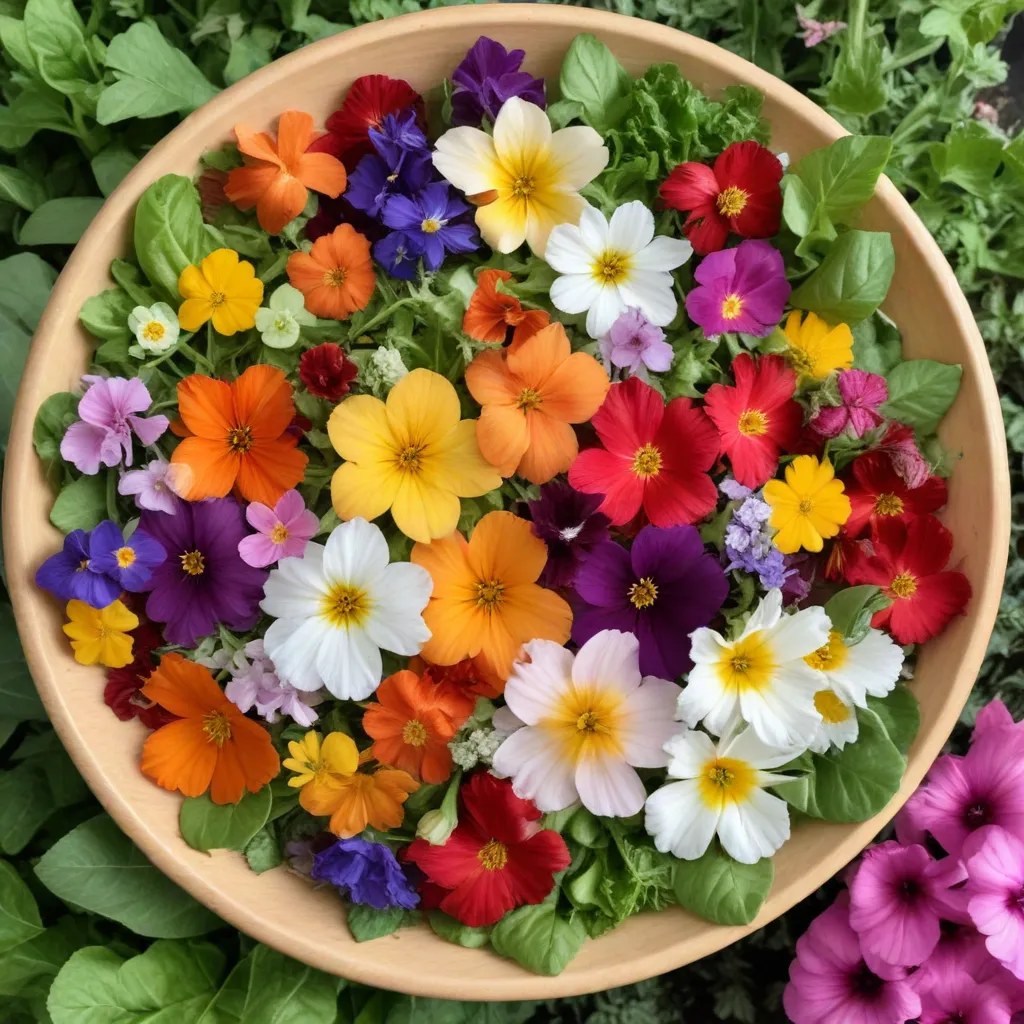
Edible Flowers: Adding Color and Flavor to Salads
Eating flowers may sound like an exotic practice reserved for the culinary elite, but the truth is, many of the vibrant blooms found in your own backyard or garden beds are perfectly safe and delicious to incorporate into your meals. At Crooked Pines Farm, we encourage our visitors to discover the joys of edible flowers – not only for their stunning visual appeal, but also for the unique flavors and unexpected health benefits they can bring to your salads and other dishes.
Types of Edible Flowers
Commonly Used Edible Flowers
Some of the most popular and readily available edible flowers include nasturtiums, pansies, violas, calendula, chives, marigolds, lavender, and borage. Each of these blooms offers its own distinctive flavor profile, from the peppery kick of nasturtiums to the subtle cucumber notes of borage. Edible flowers can lend everything from a delicate floral essence to a bold, herbaceous punch, making them invaluable tools for the creative home chef.
Seasonal Availability of Edible Flowers
The specific edible flowers you can find and use will depend largely on the time of year. Spring and early summer often bring an abundance of delicate blooms like pansies, violas, and chive blossoms, while later in the season, heartier flowers like marigolds, calendula, and nasturtiums come into their own. By planning your edible flower garden strategically, you can enjoy a vibrant parade of colors and flavors throughout the growing season.
Flavor Profiles of Edible Flowers
The tastes of edible flowers can range from sweet and floral to savory and peppery. Roses, lavender, and hibiscus offer delicate, perfumed notes, while nasturtiums, radish flowers, and mustard blooms pack a more robust, pungent punch. Chive blossoms, basil flowers, and marjoram lend an herbal, oniony essence, and chamomile and anise hyssop impart refreshing, almost minty flavors. Experimenting with different flower varieties can be a delightful way to elevate the complexity and visual interest of your salads.
Nutritional Benefits of Edible Flowers
Vitamins and Minerals
In addition to their culinary appeal, many edible flowers are nutritional powerhouses. Nasturtiums, for instance, are rich in vitamins C and E, as well as iron and manganese. Pansies and violas contain vitamins A and C, while calendula is a source of carotenoids. Incorporating these blooms into your salads can be an easy way to boost your intake of essential nutrients.
Antioxidant Properties
Edible flowers also often boast impressive antioxidant profiles. Hibiscus, lavender, and chamomile are particularly high in plant compounds that can help neutralize free radicals and support overall health. Consuming a diverse array of flower petals can be a delicious means of adding more antioxidants to your diet.
Potential Health Impacts
While more research is still needed, some studies suggest that edible flowers may offer additional benefits, such as anti-inflammatory, antimicrobial, and neuroprotective effects. For those with sensitivities, it’s important to note that edible flowers, like any plant-based food, may trigger allergic reactions in some individuals.
Incorporating Edible Flowers into Salads
Flower Preparation and Food Safety
When using edible flowers in your salads, it’s important to properly prepare them. Gently rinse the petals under cool water to remove any dirt or debris, taking care not to bruise or damage them. Avoid harvesting flowers from roadsides or areas that may have been treated with pesticides. Always confirm that the blooms you’re using are truly safe for consumption.
Aesthetic Considerations
Beyond their flavors, edible flowers can lend an eye-catching, artistic element to your salads. Arrange the petals thoughtfully, using their colors and shapes to create visually appealing compositions. Borage flowers, with their striking blue hues, can make a stunning focal point, while marigold and calendula petals add vibrant splashes of orange and yellow.
Complementary Salad Ingredients
When building a salad featuring edible flowers, consider pairing them with ingredients that will enhance their natural flavors. Peppery arugula or spicy radish leaves can provide a nice counterpoint to sweet, floral blooms. Juicy tomatoes, crunchy nuts, and tangy cheeses also make excellent companions. Experiment with different combinations to discover your favorite flavor harmonies.
Culinary Applications of Edible Flowers
Flower-Infused Salad Dressings
One creative way to incorporate edible flowers into your salads is by using them to infuse your dressings. Steep lavender or chamomile in your favorite vinegar or oil, then use the fragrant, floral-tinged mixture to dress your greens. The result is a delightfully complex, subtly flavored salad.
Edible Flower Garnishes
Sprinkle pansy, viola, or nasturtium petals over the top of your salad for a visually striking presentation. The petals not only add pops of color, but also lend their unique tastes to every bite.
Flower-Centered Salad Recipes
For a true edible flower showcase, build your salad around the blooms themselves. A “flowerfetti” salad, for example, features a vibrant medley of calendula, chive blossoms, pansies, and other petals tossed with fresh greens. The flowers become the star of the show, complemented by supporting ingredients that allow their flavors to shine.
Whether you’re looking to add a touch of natural elegance to your salads or seeking to experiment with new, unexpected taste sensations, incorporating edible flowers is a delightful way to elevate your meals at Crooked Pines Farm. As you explore the vast world of blooms fit for the dinner table, we encourage you to embrace the diversity, colors, and flavors that these edible gems have to offer. After all, there’s no better way to experience the bounty of the garden than by eating the flowers.


